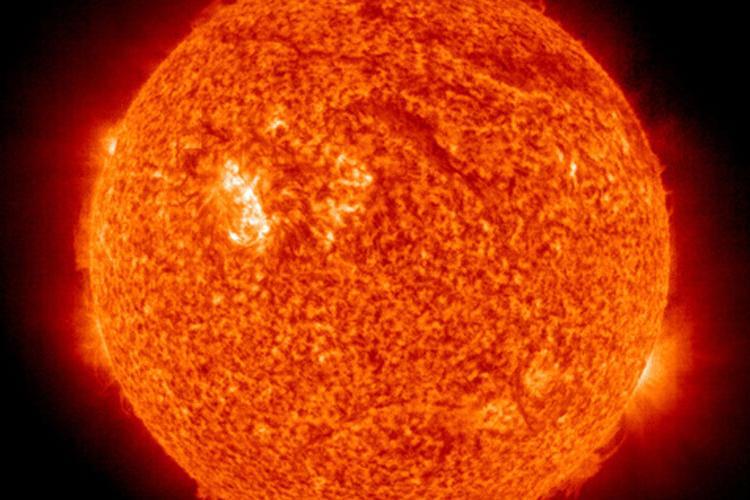The sun’s core rotates four times faster than its surface – here’s why it matters
Gravity waves recorded in the sun for the first time reveal some interesting facts

My favourite science news is the stuff that changes the way I think about the world and our place in the universe. Many dinosaurs were covered in feathers; there’s a planet in the habitable zone around the nearest star in the night sky; the universe is expanding faster and faster but no one yet knows why.
Now there’s a genuinely awe-inspiring and amazing discovery that really has changed the way I think about our solar system. A team of astronomers have discovered that the core of our sun rotates about four times faster than the surface. It’s in the middle of our solar system, on our cosmic doorstep, so how could we have missed that before? And why is it important?
It’s not easy to work out what’s inside the sun – you can’t send a probe inside to fly about. The trick is to use seismology in a similar way to how earthquakes are monitored. It’s possible to work out what’s inside the Earth under our feet, right to the core, without digging, by measuring how “seismic waves” (vibrations from earthquakes) pass through the Earth. We know from this that most of it is not liquid, contrary to popular belief, because of the so-called “S-waves”.
These waves wiggle side to side, perpendicular to the direction of travel. They can only exist in a solid, and they pass through most of the Earth. Pressure waves or “P-waves”, where the wiggle is parallel to the direction of travel (like sound), can also go through liquids. From the S-waves and P-waves, we know the Earth has a solid core, a liquid outer core, and a solid mantle and crust.

To work out what’s inside the sun, the ESA/NASA Solar and Heliospheric Observatory (SOHO for short) team has also used seismology to look at waves in the sun. In this context, it’s called helioseismology. However, you can’t stick an earthquake-monitor on the sun, so scientists use the “Doppler effect” to measure waves at the sun’s surface. The Doppler effect is the stretching or squashing of waves because of motion, whether it’s motion of the thing emitting the wave or motion of the thing receiving the wave.
In this case, sound waves wash through the sun and reach the surface, and so the sun’s surface moves towards or away from SOHO. The sun’s surface also gives off light, and the motion means the light waves are squashed or stretched. This change in wavelength is what the SOHO spacecraft measures, and the team translates this into information about the sound waves that reached the surface.
The SOHO team spent 16 years monitoring the sound waves passing through the sun. Their careful and delicate analysis of the data managed to tease out something else going on: buoyant blobs of gas bobbing around deep inside the sun, in a phenomenon called “G-waves” where G is short for gravity. (These are completely different to the “gravitational waves” from deep space discovered by LIGO, though.)
The sound waves that pass through the sun are subtly changed in pitch by this bobbing around deep inside. The evidence from this data looks very clear: the core of the sun is rotating about once a week, instead of about once a month at the surface.
This was a surprising, unexpected discovery. It’s not yet understood why the sun’s core has this faster spin. Perhaps it’s something that was imprinted into the structure of the sun early in its life, caused by the action of magnetic fields inside the sun moving charged gas along magnetic field lines and redistributing it. This would make the sun’s core a cryptic relic of the ancient history of our solar system, at a time when our planet Earth was still being formed. Understanding this is the next challenge, but either way, there is now a wonderful new way to work out what is happening deep inside the sun.

There’s lots of very good practical reasons for funding space science: it pump-primes very high-tech industry, and every €1 invested in space returns an average €6 to the wider economy. But for me the best rationale isn’t economic, it’s cultural. We seek out this knowledge because it’s intrinsically important, and because it’s beautiful, and because these achievements are what a civilisation is remembered for in the end.
I am confident that we will be remembered as the culture that discovered many dinosaurs were covered in feathers, and that there’s a planet in the habitable zone around the nearest star in the night sky, and that the universe is expanding faster and faster (but no one yet knows why) – and that hidden deep inside our sun, the core is spinning four times faster than its surface.
Stephen Serjeant is a professor of astronomy at The Open University. This article was originally published on The Conversation (theconversation.com)
Join our commenting forum
Join thought-provoking conversations, follow other Independent readers and see their replies
0Comments